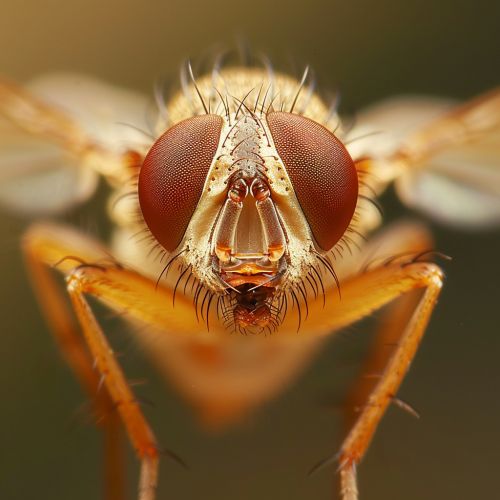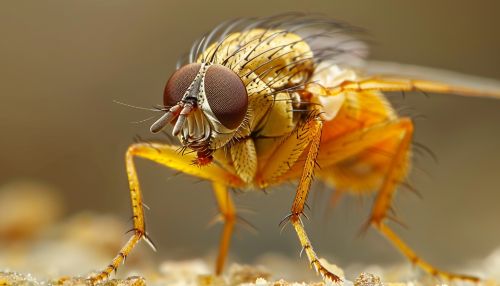Fruit fly
Overview
The fruit fly is a member of the order Diptera, the name being derived from the Greek di meaning two, and ptera meaning wings. Insects of this order use only a single pair of wings to fly, the hindwings having evolved into advanced mechanosensory organs known as halteres, which act as high-speed sensors of rotational movement and allow dipterans to perform advanced aerobatics. Fruit flies are classified under the family Drosophilidae, which are small to medium-sized flies with large compound eyes, usually red, and rounded bodies.


Biology and Lifecycle
Fruit flies undergo complete metamorphosis. The lifecycle of a fruit fly consists of an egg, three larval stages, a pupal stage, and the adult stage. Female fruit flies lay their eggs on the surface of rotting fruits or other decomposing material that can serve as food for the larvae. The larvae, which are entirely legless, develop in the fermenting material. They feed on the yeast cells and bacteria present in the decaying material.
Genetics and Research
Fruit flies are one of the most commonly used organisms in biological research, particularly in genetics and developmental biology. The species Drosophila melanogaster is used as a model organism in research because it can be easily kept in the laboratory, breeds quickly, and its genetics have been extensively studied, making it easy to manipulate.
Pest Status and Control
Fruit flies pose significant problems worldwide as pests of fruits and vegetables, both pre- and post-harvest. They can cause significant damage to crops, leading to heavy economic losses. Control methods include the use of insecticides, baited traps, and biological control agents such as parasitoids.
